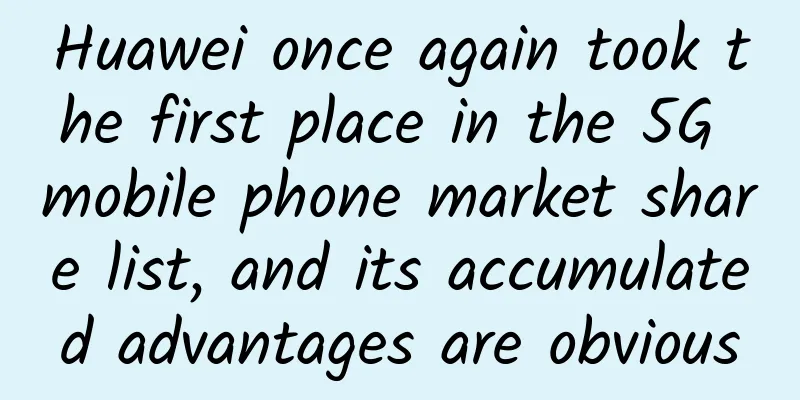How to make money by creating content? 3 profit models for vertical community operations!

|
Three profit models of vertical communities: content implantation into products; fan economy, influencers promoting products; content diversion and advertising monetization. Xiaohongshu, Taobao, Dianping, Hema... With the arrival of the second half of the Internet, more and more "e-commerce platforms" have begun to become content-oriented. A successful content community can bring hundreds of benefits: good content attracts a large amount of traffic, greatly improves user stickiness, effectively promotes brand reputation, and so on. It can be said that in this era where traffic is precious, content communities are the most powerful trump card for low-frequency e-commerce platforms to compete for user attention. However, in the process of e-commerce platforms' transformation into content-based platforms, they often face the problem of profit balance - after all, compared with free content, direct sales bring higher GMV. When the original “Guess You Like” module on Dianping.com’s homepage initially attempted to switch from recommending group purchases to recommending content, the order volume also experienced a short-term decline. Even so, major e-commerce platforms are still continuing to "contentize" because vertical content communities have a lot of room for imagination in terms of profit models. 1. Product placement in content This practice is the first step that many vertical communities usually take when attracting traffic for e-commerce. That is: link the platform content with the products and use the content as the entrance to the products. Related products at the bottom of the Xiaohongshu content details page First, attract users with high-quality and interesting content. After users enter the content details page, provide a quick product entrance, allowing users to complete the closed loop from planting grass (browsing content) to pulling grass (placing orders for consumption) - this consumption scenario is seamless and reasonable. Some e-commerce platforms often use machine learning, manual association and other means to associate content in the community that does not have its own products with related products, which is called "content structuring." However, this profit-making approach is essentially about making content serve e-commerce . Content is just an entry point to attract users into e-commerce. Normally, the directions of content and e-commerce are consistent; but when they are inconsistent, a series of problems will arise. For example, in a vertical community, if some content does not have a connection point that can be linked to e-commerce, does that mean that the content has no value? For example, there are many recipe posts in Xiaohongshu, but there are no recipes in Xiaohongshu’s e-commerce system; should this part of the content be suppressed or blocked? In fact, for vertical communities, content has its own value. Although the above consumption path is reasonable, if it damages the vitality of the vertical community in order to divert traffic to e-commerce (for example, forcibly removing high-quality content that is not related to e-commerce but is in line with the community's temperament), it would be putting the cart before the horse. 2. Fan Economy, Experts Bring Goods The best way for internet celebrities to sell products is through Taobao Live. According to data disclosed by Taobao, there are more than 1,200 anchors with more than one million fans, and more than 1,000 people following closely behind, with an average of more than 500,000 fans. These anchors are called "head anchors" and "mid-level anchors". In fact, even if you are not a mid-level anchor, as long as you have more than 100,000 fans and less than 100,000 viewers for each live broadcast, you can still sell two to three thousand pieces of clothing each time. During the peak period at the end of the year, you can even sell 6,000 pieces. (Source: WeChat article "Stories of female anchors on Taobao, from pennilessness to financial freedom"). Taobao Live This model is similar to the above-mentioned one of content implantation in products in terms of presentation form. The main difference between the two is that in the fan economy, users follow people rather than content. After Taobao anchors or Weibo celebrities have accumulated a large number of fans through their personal charm, high-quality content, and early publicity, they can recommend products to their fans. Fans will pay for it because they recognize the content producers themselves. Therefore, in this profit model, relying on the platform to mechanically link content and products (the so-called "content structuring") will not work. The platform, influencers, and fans form a three-party relationship - the platform provides influencers with a good creative environment and distribution channels, influencers are responsible for content creation and commercial monetization, and fans only need to appreciate and pay. Weibo celebrity Yang Yufan and her Taobao store
3. Content diversion and advertising monetization The most direct, main and most promising way for vertical communities to make profits is to sell advertising. Inserting advertisements into community feeds is a common method for monetizing various content products. Toutiao, Douyin, WeChat Moments, Xiaohongshu...all well-known content products are no exception. If advertising is well placed, it can not only be perfectly integrated with the company's own content, but some brand advertisements may even attract some traffic due to their excellent production and accurate delivery. For example, advertisements on WeChat Moments use a format similar to original content from friends. Once posted, they often trigger a large number of likes and comments from friends. WeChat Moments Advertisement (Image source: Internet) When it comes to building a vertical community, the value of content is to bring in traffic - whether by attracting new users or increasing the stickiness of existing low-frequency e-commerce users. Only with the attention of high-quality users will there be room for various advertising forms such as CPC, CPT, CPM, and the value of each advertising space can be continuously improved. How can content bring in a steady and continuously growing flow of traffic? The key is to provide long-term, core value to users. The long-term value positioning of vertical communities is another topic.
|
<<: Detail page copywriting template with conversion rate over 85%!
Recommend
Android phones are booming this year
In the past two years, the rapid development of A...
Reservation time for the 19th Asian Games commemorative coins: When will they be issued in 2022? Where to make an appointment?
In more than 4 months, my country's 19th Asia...
Do companies still need to do marketing during the epidemic? What to do?
People are in panic due to the epidemic. The skyr...
Can mosquitoes spread the Wuhan coronavirus? Here is the most effective way to kill mosquitoes!
In a few days, the annoying mosquitoes will start...
What should I do if I experience roller coaster-like dizziness?
Author: Xiao Lin China Rehabilitation Research Ce...
What's the matter with Shanghai setting up an undergraduate major in home economics? What is the specific situation?
What's the matter with Shanghai setting up an...
Why do I advise you not to get too hung up on technical details?
Pour a bucket of cold water on technicians who ar...
Sad culture is popular, so is heartfelt marketing far behind?
Looking at the popular advertising cases today, i...
Three warnings issued simultaneously! A new round of large-scale heavy rainfall is coming... How to defend against disastrous weather?
Central Meteorological Observatory April 25, 06:0...
Douyin promotion: Douyin traffic pool brings goods, and the business of Internet celebrities is really good
After becoming a super user traffic pool, it is n...
Those mobile phone manufacturers that have been favored by Alibaba
Nowadays, in the technology industry, you have to...
Very down-to-earth! Android 10 gets new features
According to foreign media reports, developers re...
Qualcomm CPU vulnerability found: 900 million Android devices worldwide affected
Information security research company Check Point ...
There are some places that you can't pick randomly, the harm is greater than you think
This article was reviewed by Luo Xuming, Chief Ph...
Y-20 tanker officially enters service! Why is “aerial refueling” so important?
Recently, my country's Y-20 large aerial refu...




![The five elements landing system of community operation, the only common framework diagram for all big names to earn 100,000 yuan a day [audio course]](/upload/images/67cc3393a2134.webp)




